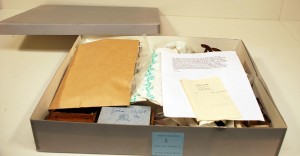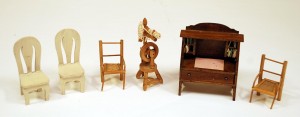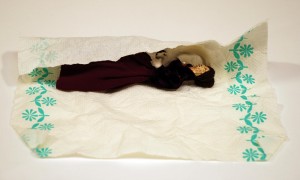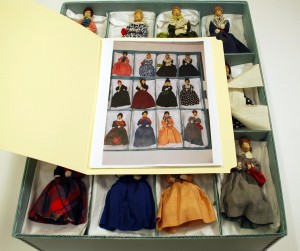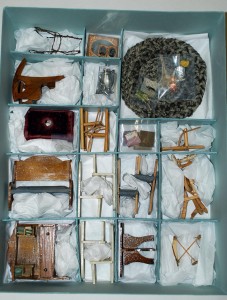Throwback Thursday: Alexander Gardner Edition
October 15th, 2015Each week we’ll be posting a photograph from University Archives that shows a scene from KU’s past. We’ve also scanned more than 8,200 images from KU’s University Archives and made them available online; be sure to check them out!
This week’s images are among the earliest we have of the KU campus, showing the new university within its first two years. The stereoviews were taken by renowned Civil War photographer Alexander Gardner in 1867 and 1868 for his series Across the Continent on the Union Pacific Railway, Eastern Division. Gardner’s 194th birthday is this Saturday, October 17th. These photographs form part of the George Allen Photograph Collection in Spencer’s Kansas Collection.
“State University, Lawrence, Kansas,” 1867-1868. Shown is North College,
the first building at KU and its only structure until 1872. Located on forty acres
donated by former Kansas governor Charles Robinson and his wife Sara,
the site was located where Corbin and Gertrude Sellards Pearson Halls currently stand.
Alexander Gardner, Across the Continent on the Union Pacific Railway, Eastern Division.
George Allen Photograph Collection. Call Number: RH PH 137. Click image to enlarge.
“Lawrence, Kansas from Fort. State University, on the Left,” 1867-1868.
Alexander Gardner, Across the Continent on the Union Pacific Railway, Eastern Division.
George Allen Photograph Collection. Call Number: RH PH 137. Click image to enlarge.
Front and back of the stereoview card, “Lawrence, Kansas, from
Mount Oriad [sic], Kansas,” 1867-1868. Alexander Gardner,
Across the Continent on the Union Pacific Railway, Eastern Division.
George Allen Photograph Collection. Call Number: RH PH 137. Click image to enlarge.
Author John Charlton provides some context for these images in his article “Westward, The Course of Empire Takes Its Way” (Kansas History, Summer 1997).
[Gardner’s] series of stereographic images begins at the Union Pacific Railway, ED, company offices and depot in St. Louis, Missouri, and follows the railroad’s construction progress westward between Kansas City, Missouri, to just past Fort Hays, on the High Plains…
Gardner’s photographs in Kansas, and his photographs along the survey for the railway company’s planned future route, were made in the late summer of 1867 through the winter of 1868 between St. Louis, Missouri, and San Francisco, California. He was commissioned by Union Pacific officials to make this photographic series to illustrate the company’s report of its survey of a southern railroad route across the continent with the goal of gaining congressional approval of federal funding for construction. The Union Pacific Railway, ED, line was in close competition with the Omaha-based Union Pacific Railroad to build the first transcontinental railroad (118).
You can further explore KU’s early years by visiting Spencer’s current exhibit, “Achievement of a Dream: The Birth of the University of Kansas.”
Caitlin Donnelly
Head of Public Services
Melissa Kleinschmidt, Megan Sims, and Abbey Ulrich
Public Services Student Assistants




















